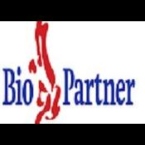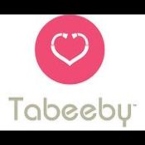Theme: Reconnoitring the Challenges in Endocrinology Research
Endocrine Congress 2022
Conference series welcome to the world largest gathering of the Global Summit on Endocrinology with a theme “Collaborative Strategies and Innovative Approaches to fight Endocrinology and Metabolic Disorders” by bringing the international Endocrinology ,Diabetes & Metabolic Disorders expertise, researchers, professors, scientific communities, therapists, counsellors, delegates, students, business professionals and executives together in August 22-23, 2022 as a Webinar. Endocrinology Congress 2022 provides a worldwide stage to worldwide systems administration and trading most recent developments in Endocrinology. Endocrinology Congress 2022 is a platform which brings together individuals who have an interest in different fields of Endocrinology and Metabolic Disorders like Adrenal Disorders, Pituitary Disorders, Diabetes, and Related Complications, Diseases and Disorders of the Thyroid, Thyroid Nodules and Tumors, Gynecomastia, Lipid Disorders, Osteoporosis, Parathyroid, and Calcium Disorders. ENDOCRINE CONGRESS 2022 Webinar helps to explore new practices and provides information on different endocrine disorders, hormones, diabetes, pediatric, adolescent and renal disease, neuropathy, thyroid problems, bariatric medicine, neuroendocrine tumours, metabolic bone diseases. Proven rehearsals request alters in the enlightenment of novice, more practice-relevant research, and closer working relationships between clinicians and researchers. An evidence-based practice also provides opportunities for endocrinologists to be more analysed, more efficacious, well-organized, and spirited, and to exaggerate effects of the clinical judgment.
Conference Theme: Reconnoitring the Challenges in Endocrinology Research
Scope and Importance:
ENDOCRINE CONGRESS 2022 aims to provide an opportunity to share knowledge, expertise along with unparalleled networking opportunities between a large number of medical and industrial professionals in this sphere. The meeting gathers renowned scientists, physicians, surgeons, young researchers, industrial delegates and talented student communities in the field of diabetic medicine under a single roof where networking and global partnering happens for the acceleration of future research. This conference is an international platform for presenting research about diabetes management and therapeutics, exchanging ideas about it and thus, contributes to the dissemination of knowledge in management of the disease for the benefit of the society.
Endocrinology is the field of hormone-related diseases. An endocrinologist can diagnose and treat hormone problems and the complications that arise from them. Hormones regulate metabolism, respiration, growth, reproduction, sensory perception, and movement. Hormone imbalances are the underlying reason for a wide range of medical conditions. Endocrinology focuses both on the hormones and the many glands and tissues that produce them.
Who Should Attend:
- Endocrinology, Diabetes & Metabolism students, Scientists
- Endocrinology, Diabetes & Metabolism Researchers
- Pharmacists who provide interdisciplinary care.
- Business Entrepreneurs
- Training Institutes
- Manufacturing Medical Devices Companies
- Diabetologists
- Researchers
- Research Institutes
- Business delegates
- Young Researchers
- Endocrinologists
- Participation Benefits
- Exchange ideas and network with leading, endocrinologists, diabetes researchers, clinician’s researchers, diabetes and endocrinology professionals and researchers from more than 40 countries.
- Discuss quality initiatives that can be applied in the practice.
- Discuss ways to collaborate in putting quality initiatives in place throughout the Endocrinology and Diabetes study and endocrinology and diabetes disorders and treatment.
- Participants can gain direct access to a core audience of professionals and decision-makers and can increase visibility through branding and networking at the conference.
- Learn and discuss key news and challenges with senior level speakers.
- With presentations, panel discussions, roundtable discussions, and workshops, we cover every topic from top to bottom, from global macro issues to strategies to tactical issues.
Track 1. Adrenal endocrine disorders:
The adrenal glands are located just above the kidneys and produce three major hormones, two of which originate in the outer adrenal cortex (cortisol and aldosterone) and the other from the inner adrenal medulla (epinephrine)
Types of Endocrine Disorders:
Adrenal insufficiency:. The adrenal gland releases too little of the hormone cortisol and sometimes, aldosterone. Symptoms contain fatigue, stomach upset, dehydration, and skin changes. Addison's disease is a type of adrenal insufficiency.
Cushing's disease: Overproduction of a pituitary gland hormone leads to an overactive adrenal gland. A similar disorder called Cushing's syndrome may occur in the people, particularly in children, who take high doses of corticosteroid medications.
Track 2. Challenges of Endocrinology:
Rodent models have been widely used in endocrinology but there are concerns regarding their use as models of these new human conditions that are a consequence of metabolic disorders related to gene–environment interactions. Human populations however comprise infinitely varied genotypes which can respond in many different ways to the same exposures; even in the most obesogenic environment only some individuals become obese. These control animals however lives a sedentary life with continuous access to food, within confined containers in standardized conditions with constant day–night cycles and hence no environmental stimuli.
Endocrinology is now central to the major current health issues of aging, population control, and the pandemics of obesity, diabetes, and cancer
Track 3.Genomic endocrinology:
The advent of molecular biology has already transformed the landscape in endocrinology. From the early days of molecular endocrinology, when techniques such as Southern blotting were used to detect large deletions, through the introduction of PCR and sequencing with the identification of variants in single genes, and finally to the present day when the focus is shifting to whole genome sequencing and identification of epigenetic influences on phenotypic expression, represents a quantum leap in our knowledge and understanding of the genomic processes underlying normality and disease evolution. However, with increasingly sophisticated techniques becoming available, the challenges facing genomic and molecular endocrinology will become increasingly complex.
Track 4.Covid 19 and Endocrinology:
The coronavirus disease 2019 (COVID-19) pandemic continues to exert a significant impact on global health care systems, causing devastating mortality and morbidity. The coronavirus responsible for COVID-19, severe acute respiratory syndrome coronavirus 2, obtains cellular access through the angiotensin-converting enzyme 2 (ACE2) receptor in a process requiring the trans membrane serine protease 2 (TMPRSS2) protein. Both ACE2 and TMPRSS2 are widely expressed in many endocrine glands. This, along with several case reports of thyroid and pituitary disruption in patients with COVID-19, has resulted in significant interest in its impact on the endocrine system. Indeed, as mortality is abated by the increasing availability of effective vaccines, there is increasing focus on the long-term effects on health in COVID-19 survivors.
Track 5.Current Advances in Endocrinology Metabolism:
Current Advances in Endocrinology & Metabolism is a monthly current literature searching service which is fast, comprehensive, economical and easy to use. It enables pure and applied scientists to keep abreast of the ever-increasing literature being published in their subject area, by providing a subject categorized listing of titles, authors, bibliographic details and authors' addresses. Titles are presented under appropriate subject headings with full cross references.
Major subject areas covered include: Nitrogen metabolism; Carbohydrate metabolism; Lipid metabolism; Receptor transduction mechanisms; Hypothalamic hormones; Endogenous opioids; Posterior pituitary gland; Thyroid gland; Adrenal cortex; Sex steroids; Endocrine pancreas; Gastrointestinal hormones; Autocoids; Metabolic regulation in specific organ sites; Biochemistry and physiology of reproduction; Energy balance and nutrition; Applied biochemistry and physiology; Effects of disorders on metabolism; Comparative biochemistry and physiology.
Track 6. EDCs (Endocrine Disrupting Chemicals):
Many chemicals, both natural and man-made, may mimic or interfere with the body’s hormones, known as the endocrine system. Called endocrine disruptors, these chemicals are linked with developmental, reproductive, brain, immune, and other problems. Endocrine disruptors are found in many everyday products, including some plastic bottles and containers, liners of metal food cans, detergents, flame retardants, food, toys, cosmetics, and pesticides. Some endocrine-disrupting chemicals are slow to break-down in the environment. That characteristic makes them potentially hazardous over time. Endocrine disrupting chemicals cause adverse effects in animals. Because people are typically exposed to multiple endocrine disruptors at the same time, assessing public health effects is difficult.
Track 7.Endocrine Glands and Hormones:
Adrenal glands secretes Aldosterone and it Regulates salt, water balance, and blood pressure.
Pituitary gland secretes Corticosteroid and it Controls key functions in the body; acts as an anti-inflammatory; maintains blood sugar levels, blood pressure, and muscle strength; regulates salt and water balance
Pituitary gland secretes Oxytocin it Stimulates contraction of uterus and milk ducts in the breast.
Pancreas secretes Glucagon it raises Raises blood sugar levels.
Ovaries secrete Estrogen Affects development of female sexual characteristics and reproductive development, important for functioning of uterus and breasts; also protects bone health.
Pineal gland secretes Melatonin it Releases melatonin during night hours to help with sleep.
Thymus secretes Humoral factors and it Helps to develop the lymphoid system.
Track 8.Endocrine Tumours and Neoplasia:
- Thyroid cancer is the most common type of endocrine cancer, diagnosed in about 64,000 people each year.
- Neuroendocrine tumors are endocrine tumors that also affect the nervous system.
Neuroendocrine neoplasms (NENs) are heterogeneous tumors with a common phenotype. There are two fundamentally different groups of NENs: well-differentiated, low-proliferating NENs, called neuroendocrine tumors (NETs) or carcinoids, and poorly differentiated, highly proliferating NENs, called small- or large-cell neuroendocrine carcinomas (NECs). This NEN dichotomy is probably due to an origin from different neuroendocrine progenitor cells.
Track 9.Endocrinology: Male & Female Reproductive Health:
Reproductive health refers to the condition of male and female reproductive systems during all life stages. These systems are made of organs and hormone-producing glands, including the pituitary gland in the brain. Ovaries in females and testicles in males are reproductive organs, or gonads, that maintain health of their respective systems.
Polycystic ovary syndrome (PCOS), menopausal symptoms, and other endocrine conditions affecting women’s health often fly under the radar. PCOS is the most common cause of an ovulatory infertility; ∼ 90–95% of an ovulatory women seeking treatment for infertility have PCOS . Women may learn they have PCOS only after seeking infertility treatment. Most women with PCOS have elevated levels of luteinizing hormone and reduced levels of follicle-stimulating hormone (FSH), coupled with elevated levels of androgens and insulin . These imbalances can manifest as oligomenorrhea or amenorrhea (infrequent or lack of menstruation). Underproduction of estrogen and overproduction of androgens (testosterone, dehydroepiandrosterone, and androstenedione) by the ovaries can result in a number of additional clinical features, including tiny cysts on the surface of the ovaries (polycysts) and hair and skin symptoms.
Male Reproductive Endocrinology
Male sexual development and hormonal function depend on a complex feedback circuit involving the hypothalamus-pituitary-testes modulated by the central nervous system. The testes synthesize two important products: testosterone, needed for the development and maintenance of many physiological functions; and sperm, needed for male fertility. The synthesis of both products is regulated by endocrine hormones produced in the hypothalamus and pituitary, as well as locally within the testis. Testosterone is indispensable for sperm production; however both testosterone and Follicle Stimulating Hormone (FSH) are needed for optimal testicular development and maximal sperm production
Track 10. Molecular and Cellular Endocrinology:
The cellular and molecular endocrinology research group in the Division of Endocrinology, Diabetes, Metabolism, and Nutrition-Research investigates a broad group of endocrine-related conditions.
These areas of research include:
- Amyloid formation in type 2 diabetes and regulation of growth hormone gene expression
- Autoimmune thyroid disease
- Bone metabolism
- Calcium in atherogenesis
- Growth factor regulation
- Molecular medicine approaches in cancer treatment
- Muscle metabolism and aging
Track 11. Neuroendocrinology:
Neuroendocrinology is the branch of biology (specifically of physiology) which studies the interaction between the nervous system and the endocrine system; i.e. how the brain regulates the hormonal activity in the body The nervous and endocrine systems often act together in a process called neuroendocrine integration, to regulate the physiological processes of the human body. Neuroendocrinology arose from the recognition that the brain, especially the hypothalamus, controls secretion of pituitary gland hormones, and has subsequently expanded to investigate numerous interconnections of the endocrine and nervous systems.
Track 12.Steroid Hormones and Receptors:
Steroid hormone receptors are found in the nucleus, cytosol, and also on the plasma membrane of target cells. They are generally intracellular receptors (typically cytoplasmic or nuclear) and initiate signal transduction for steroid hormones which lead to changes in gene expression over a time period of hours to days. The best studied steroid hormone receptors are members of the nuclear receptor subfamily 3 (NR3) that include receptors for estrogen (group NR3A)and 3-ketosteroids (group NR3C).
Track 13.Thyroid Disorders:
Thyroid disorders are conditions that affect the thyroid gland, a butterfly-shaped gland in the front of the neck. The thyroid has an important role to regulate numerous metabolic processes throughout the body. The thyroid gland is located below Adam's apple wrapped around the trachea (windpipe). A thin area of tissue in the gland's middle, known as the isthmus, joins the two thyroid lobes on each side. The thyroid uses iodine to produce vital hormones. Thyroxine, also known as T4, is the primary hormone produced by the gland. After delivery via the bloodstream to the body's tissues, a small portion of the T4 released from the gland is converted to triiodothyronine (T3), which is the most active hormone.
Track 14.Epidemiology of Diabetes:
Globally, an estimated 463 million adults are living with diabetes, according to the latest 2019 data from the International Diabetes Federation. Diabetes prevalence is increasing rapidly; previous 2017 estimates put the number at 425 million people living with diabetes. The number is projected to almost double by 2030.Type 2 diabetes makes up about 85-90% of all cases. Diabetes mellitus occurs throughout the world, but is more common (especially type 2) in the more developed countries. The greatest increase in prevalence is, however, occurring in low- and middle-income countries including in Asia and Africa, where most patients will probably be found by 2030 The increase in incidence in developing countries follows the trend of urbanization and lifestyle changes, including increasingly sedentary lifestyles, less physically demanding work and the global nutrition transition, marked by increased intake of foods that are high energy-dense but nutrient-poor.
Track 15.Diabetes Diet Eating and Physical Activity:
Nutrition and physical activity are important parts of a healthy lifestyle when you have diabetes. Along with other benefits, following a healthy meal plan and being active can help you keep your blood glucose level, also called blood sugar, in your target range. To manage your blood glucose, you need to balance what you eat and drink with physical activity and diabetes medicine, if you take any. What you choose to eat, how much you eat, and when you eat are all important in keeping your blood glucose level in the range that your health care team recommends. Becoming more active and making changes in what you eat and drink can seem challenging at first. You may find it easier to start with small changes and get help from your family, friends, and health care team.
Track 16.Diabetes Mellitus:
Diabetes is a condition that results from lack of the hormone insulin in a person's blood, or when the body has a problem using the insulin it produces (insulin resistance). There is another disease with a similar name, diabetes insipidus; however, they are not related. When people say "diabetes", they usually mean diabetes mellitus. People with diabetes Mellitus are called "diabetics".
Glucose is a natural carbohydrate that our bodies use as a source of energy. The kind of sugar sold in supermarkets is called sucrose, and is much different from glucose. High concentrations of glucose can be found in soft drinks and fruits.
Track 17.Advanced Treatment for Diabetes:
Despite the known benefits of a healthy lifestyle, many individuals find it hard to maintain such a lifestyle in our modern world, which facilitates sedentary behaviour and overeating. As a consequence, the prevalence of type 2 diabetes mellitus is predicted to increase dramatically over the coming years. The various lines of research can be grouped into three main categories: technological, biological, and pharmacological. Technological solutions are focused on the delivery of insulin and glucagon via an artificial pancreas, and components of the system are already in use, suggesting this option may well be available within the next 10 years. The last category, pharmacological research, appears
Track 18.Cardiovascular Endocrinology:
Cardiovascular disease (CVD) is a class of diseases that involve the heart or blood vessels. CVD includes coronary artery diseases (CAD) such as angina and myocardial infarction (commonly known as a heart attack)Other CVDs include stroke, heart failure, hypertensive heart disease, rheumatic heart disease, cardiomyopathy, abnormal heart rhythms, congenital heart disease, valvular heart disease, carditis, aortic aneurysms, peripheral artery disease, thromboembolic disease, and venous thrombosis.
The underlying mechanisms vary depending on the disease. It is estimated that dietary risk factors are associated with 53% of CVD deaths Coronary artery disease, stroke, and peripheral artery disease involve atherosclerosis. This may be caused by high blood pressure, smoking, diabetes mellitus, lack of exercise, obesity, high blood cholesterol, poor diet, excessive alcohol consumption and poor sleep, among other things.
Track 19.Endocrine Complications of Diabetes:
Disorders of endocrine system are often associated with diabetes mellitus. Overproduction of hormones with hyperglycaemic effect, for example that of growth hormone or cortisol, can lead to impaired glucose tolerance or even to induce manifestation of diabetes mellitus. Autoimmune character of some endocrinopathies is a well-known cause of diabetes mellitus type 1 and also of the thyroid gland involvement. Diabetes mellitus, especially with a poor glycaemic control, influences various functions of endocrine organs. The most frequent disturbances are the slowdown of the growth in children and adolescents and hypothalamus-pituitary-gonadal axis dysfunction in women.
Track 20.Biomarkers for Diabetes:
Biomarkers are conventionally defined as ‘biological molecules that represent health and disease states. They typically are measured in readily available body fluids (blood or urine), lie outside the causal pathway, are able to detect sub-clinical disease, and are used to monitor clinical and sub-clinical disease burden and response to treatments. Biomarkers can be direct endpoints of the disease itself, or indirect or surrogate endpoints. New technologies (such as metabolomics, proteomics, and genomics) bring a wealth of opportunity to develop new biomarkers. Other new technologies enable the development of non-molecular, functional or bio-physical tissue-based biomarkers. Diabetes mellitus is a complex disease affecting almost every tissue and organ system, with metabolic ramifications extending far beyond impaired glucose metabolism
Track 21.Endocrinology and Endocrine Toxicology:
Endocrine toxicity results when a chemical interferes with the synthesis, secretion, transport, metabolism, binding action, or elimination of hormones necessary for endocrine functions resulting in loss of normal tissue function, development, growth, or reproduction. Endocrine signalling occurs in feedback mechanism in which the central nervous system initiates the signalling via the hypothalamus. Hormones produced by the hypothalamus act on the pituitary, which secretes additional harm.
Market analysis
Endocrinology Metabolic Disorders is a part of science managing the endocrine organs and related issue and a metabolic issue manages unusual compound responses in the body adjust the typical metabolic procedure. Endocrinology incorporates the investigation of hormones, the endocrine framework, and their job in the physiology of the body. Endocrinology is a division of drug which deals with the analysis and treatment of illnesses identified with hormones and furthermore demonstrative assessment of a wide assortment of side effects and varieties and the long haul the board of scatters of insufficiency or overabundance of at least one hormone. Diabetes mellitus (DM), usually alluded to as diabetes, is a gathering of metabolic issue where there are high glucose levels over a delayed period. Manifestations of high glucose incorporate incessant pee, expanded thirst, and expanded yearning. Whenever left untreated, diabetes can cause numerous complexities. A metabolic issue can happen when sporadic synthetic responses in the body adjusting the typical metabolic pathway. It can likewise be characterized as acquired single quality irregularity, the vast majority of which are autosomal latent.
Europe: Europe has the most elevated number of youngsters living with sort 1 diabetes. By 2040, 71.1 million grown-ups living with diabetes in the Europe Region.
USA: More than 100 million U.S. grown-ups are currently living with diabetes or prediabetes. Diabetes was the seventh driving reason for death in the U.S. in 2015. In 2015, an expected 1.5 million new instances of diabetes were analysed among individuals ages 18 and more established.
Asia: The International Diabetes Federation assessed that there were over 60% of the individuals with diabetes live in Asia, with very nearly one-half in China and India joined. The Western Pacific, the world's most crowded district, has more than 138.2 million individuals with diabetes, and the number may ascend to 201.8 million by 2035.
- Participation Benefits:
- Exchange ideas and network with leading, endocrinologists, diabetes researchers, clinician’s researchers, diabetes and endocrinology professionals and researchers from more than 40 countries.
- Discuss quality initiatives that can be applied in the practice.
- Discuss ways to collaborate in putting quality initiatives in place throughout the Endocrinology and Diabetes study and endocrinology and diabetes disorders and treatment.
- Participants can gain direct access to a core audience of professionals and decision-makers and can increase visibility through branding and networking at the conference.
- Learn and discuss key news and challenges with senior level speakers.
- With presentations, panel discussions, roundtable discussions, and workshops, we cover every topic from top to bottom, from global macro issues to strategies to tactical issues.
Conference Highlights
- Adrenal endocrine disorders
- Challenges of Endocrinology
- Genomic endocrinology
- Covid 19 and Endocrinology
- Current Advances in Endocrinology Metabolism
- EDCs (Endocrine Disrupting Chemicals)
- Endocrine Glands and Hormones
- Endocrine Tumors and Neoplasia
- Endocrinology: Male & Female Reproductive Health
- Molecular and Cellular Endocrinology
- Neuroendocrinology
- Steroid Hormones and Receptors
- Thyroid Disorders
- Epidemiology of Diabetes
- Diabetes Diet Eating and Physical Activity
- Diabetes Mellitus
- Advanced Treatment for Diabetes
- Cardiovascular Endocrinology
- Endocrine Complications of Diabetes
- Biomarkers for Diabetes
- Endocrinology and Endocrine Toxicology
To share your views and research, please click here to register for the Conference.
To Collaborate Scientific Professionals around the World
| Conference Date | August 22-23, 2022 | ||
| Sponsors & Exhibitors |
|
||
| Speaker Opportunity Closed | |||
| Poster Opportunity Closed | Click Here to View | ||
Useful Links
Special Issues
All accepted abstracts will be published in respective Our International Journals.
- Endocrinology & Diabetes Research
- Journal of Thyroid Disorders & Therapy
- Endocrinology & Metabolic Syndrome
Abstracts will be provided with Digital Object Identifier by








